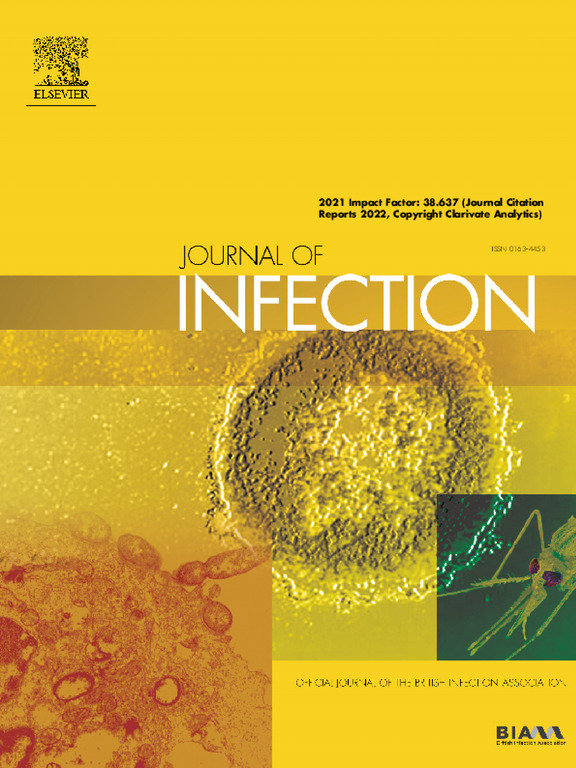Prevalence and risk factors for Staphylococcus aureus colonisation among healthy individuals in low- and middle-income countries: A systematic review and meta-analysis
IF 14.3
1区 医学
Q1 INFECTIOUS DISEASES
引用次数: 0
Abstract
Background
Staphylococcus aureus is capable of asymptomatic colonisation, which can progress to opportunistic and potentially life-threatening infection. The data on S. aureus colonisation in low- and middle-income countries (LMIC) are limited. This systematic review and meta-analysis estimates the prevalence of S. aureus colonisation in asymptomatic individuals in LMIC, with secondary objectives of assessing antimicrobial resistance, colonisation risk factors, and the molecular epidemiology of colonising strains.
Methods
Articles published up to July 2023 were identified by searching four electronic databases. Studies that presented S. aureus colonisation prevalence in healthy individuals from a community setting in LMIC were included. Data extraction was performed independently by two reviewers with disagreement resolved through consensus. Studies were critically appraised using the Joanna Briggs Institute Prevalence tool. Random effects meta-analysis was conducted where appropriate. This study was registered in advance with PROSPERO (CRD42019147780).
Findings
A total of 16 610 citations were identified of which 138 studies (59 732 participants) met the eligibility criteria. The majority of studies had a low risk of bias. The pooled prevalence of S. aureus colonisation at nose and/or throat sites was 26·4% (95% CI 23·8 - 29·1%). The prevalence of methicillin-resistance in colonising S. aureus strains was 15·0% (95% CI: 11·8 to 18·6%), with a higher prevalence observed in Africa compared to Asia and South America (22·5% vs. 13·1% vs. 5·4% respectively). Panton-Valentine leukocidin genes were present in 26·4% (95% CI: 17·1% to 32·8%) of 2531 isolates.
Interpretation
While the prevalence of asymptomatic S. aureus colonisation in LMIC mirrors that found in high-income countries, there was a higher prevalence of antimicrobial resistance and other virulence factors. Variability in study methods and sparsity of data from many LMIC, underscore the need for a global approach to S. aureus surveillance. This will be critical for informing effective infection prevention strategies.
低收入和中等收入国家健康人群中金黄色葡萄球菌定殖的患病率和危险因素:一项系统综述和荟萃分析
背景:金黄色葡萄球菌能够无症状定植,可发展为机会性和潜在的危及生命的感染。关于中低收入国家(LMIC)金黄色葡萄球菌定殖的数据有限。本系统综述和荟萃分析估计了金黄色葡萄球菌在LMIC无症状个体中的定殖率,次要目标是评估抗菌素耐药性、定殖风险因素和定殖菌株的分子流行病学。方法:检索到2023年7月前发表的论文。纳入了在低收入和中等收入国家社区环境中健康个体中金黄色葡萄球菌定殖流行率的研究。数据提取由两位评论者独立完成,分歧通过共识解决。使用乔安娜布里格斯研究所流行工具对研究进行了批判性评估。适当时进行随机效应荟萃分析。本研究已在PROSPERO (CRD42019147780)提前注册。结果:共发现16610条引文,其中138项研究(59732名受试者)符合入选标准。大多数研究的偏倚风险较低。鼻和/或咽喉部位金黄色葡萄球菌定殖的总患病率为26.4% (95% CI为23.8 - 29.1%)。定植金黄色葡萄球菌菌株对甲氧西林耐药的患病率为15.0% (95% CI: 11.8至18.6%),非洲的患病率高于亚洲和南美洲(分别为22.5%比13.1%和5.4%)。在2531株分离物中,有26.4% (95% CI: 17.1% ~ 32.8%)存在潘通-瓦伦丁白细胞介素基因。解释:虽然低收入和中等收入国家无症状金黄色葡萄球菌定殖的流行率与高收入国家相同,但抗菌素耐药性和其他毒力因素的流行率更高。研究方法的可变性和来自许多低收入和中等收入国家的数据的稀疏性,强调了对金黄色葡萄球菌监测采取全球方法的必要性。这对于宣传有效的感染预防战略至关重要。数据共享:本研究的数据将与出版物一起提供给向TL提供方法学上合理建议的研究人员。在适当的情况下,这可能包括原始整理数据、数据字典和分析代码。
本文章由计算机程序翻译,如有差异,请以英文原文为准。
求助全文
约1分钟内获得全文
求助全文
来源期刊

Journal of Infection
医学-传染病学
CiteScore
45.90
自引率
3.20%
发文量
475
审稿时长
16 days
期刊介绍:
The Journal of Infection publishes original papers on all aspects of infection - clinical, microbiological and epidemiological. The Journal seeks to bring together knowledge from all specialties involved in infection research and clinical practice, and present the best work in the ever-changing field of infection.
Each issue brings you Editorials that describe current or controversial topics of interest, high quality Reviews to keep you in touch with the latest developments in specific fields of interest, an Epidemiology section reporting studies in the hospital and the general community, and a lively correspondence section.
 求助内容:
求助内容: 应助结果提醒方式:
应助结果提醒方式:


